Do you have a question about the Schumacher SE-4220 and is the answer not in the manual?
Key safety rules for operating the battery charger and handling batteries.
Specifications and conditions for using extension cords with the charger.
Requirements for a well-ventilated area and avoiding explosive gases.
Essential protective gear and precautions for safe battery handling.
Importance of having assistance and immediate first aid for acid contact.
Removing metal items to prevent short circuits and burns.
Warnings against smoking or sparks near batteries due to explosive gases.
Explains the need for grounding and proper plug connection for safety.
Guidance on using temporary adapters and ensuring proper grounding.
Steps for selecting voltage, cleaning terminals, and checking electrolyte levels.
Following specific manufacturer guidelines for charging and ventilation.
Procedures for removing batteries from vehicles and marine use.
Precautions to avoid sparks and explosion hazards during vehicle charging.
Identifying battery posts and determining the vehicle's ground connection.
Step-by-step connection for negative-grounded vehicles.
Step-by-step connection for positive-grounded vehicles.
Steps for selecting amperage, unplugging, and removing clips after charging.
Safety warnings and procedures for removing batteries and marine use.
Instructions for connecting charger clips to the battery or extension cable.
Steps for unplugging and removing clips after charging is complete.
Explanation of the rotary switch for selecting voltage and charge rate.
Description of the timer function to prevent overcharging.
How to use the HOLD position for continuous or extended charging.
How the ammeter indicates charging current and its behavior.
Steps for using the engine start function with the charger.
Instructions for what to do if the engine fails to start.
Steps to take after the engine starts successfully.
Critical warnings against starting without a battery or when engine issues exist.
How to calculate Ampere Hour rating from Reserve Capacity.
Formula and example for calculating required charging time.
Information on hydrometer readings and visual indicators of charge level.
Steps before charging, including electrolyte level and switch settings.
How to set the charge rate switch and timer for charging.
Guidance on setting charge time and monitoring the charging process.
Table showing charge rates and times for different battery sizes.
Lists the parts and tools required for assembly.
Detailed step-by-step instructions for assembling the charger.
Solutions for no meter reading or charger not turning on.
Diagnosing clicking noise, low battery voltage, or defective batteries.
Resolving issues related to poor connections or incorrect switch positions.
Details on warranty duration, coverage, and exclusions.
Information on legal rights that may vary by state.
Key safety rules for operating the battery charger and handling batteries.
Specifications and conditions for using extension cords with the charger.
Requirements for a well-ventilated area and avoiding explosive gases.
Essential protective gear and precautions for safe battery handling.
Importance of having assistance and immediate first aid for acid contact.
Removing metal items to prevent short circuits and burns.
Warnings against smoking or sparks near batteries due to explosive gases.
Explains the need for grounding and proper plug connection for safety.
Guidance on using temporary adapters and ensuring proper grounding.
Steps for selecting voltage, cleaning terminals, and checking electrolyte levels.
Following specific manufacturer guidelines for charging and ventilation.
Procedures for removing batteries from vehicles and marine use.
Precautions to avoid sparks and explosion hazards during vehicle charging.
Identifying battery posts and determining the vehicle's ground connection.
Step-by-step connection for negative-grounded vehicles.
Step-by-step connection for positive-grounded vehicles.
Steps for selecting amperage, unplugging, and removing clips after charging.
Safety warnings and procedures for removing batteries and marine use.
Instructions for connecting charger clips to the battery or extension cable.
Steps for unplugging and removing clips after charging is complete.
Explanation of the rotary switch for selecting voltage and charge rate.
Description of the timer function to prevent overcharging.
How to use the HOLD position for continuous or extended charging.
How the ammeter indicates charging current and its behavior.
Steps for using the engine start function with the charger.
Instructions for what to do if the engine fails to start.
Steps to take after the engine starts successfully.
Critical warnings against starting without a battery or when engine issues exist.
How to calculate Ampere Hour rating from Reserve Capacity.
Formula and example for calculating required charging time.
Information on hydrometer readings and visual indicators of charge level.
Steps before charging, including electrolyte level and switch settings.
How to set the charge rate switch and timer for charging.
Guidance on setting charge time and monitoring the charging process.
Table showing charge rates and times for different battery sizes.
Lists the parts and tools required for assembly.
Detailed step-by-step instructions for assembling the charger.
Solutions for no meter reading or charger not turning on.
Diagnosing clicking noise, low battery voltage, or defective batteries.
Resolving issues related to poor connections or incorrect switch positions.
Details on warranty duration, coverage, and exclusions.
Information on legal rights that may vary by state.
| Brand | Schumacher |
|---|---|
| Model | SE-4220 |
| Category | Battery Charger |
| Language | English |
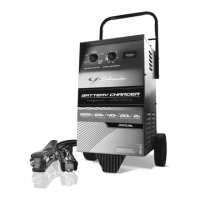


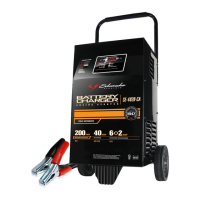
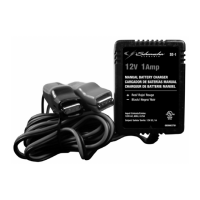


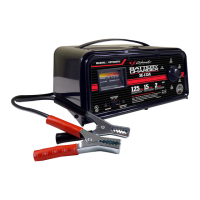
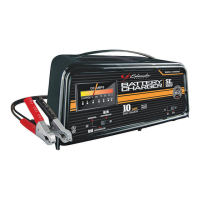
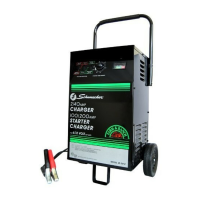

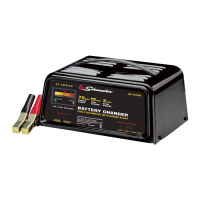
